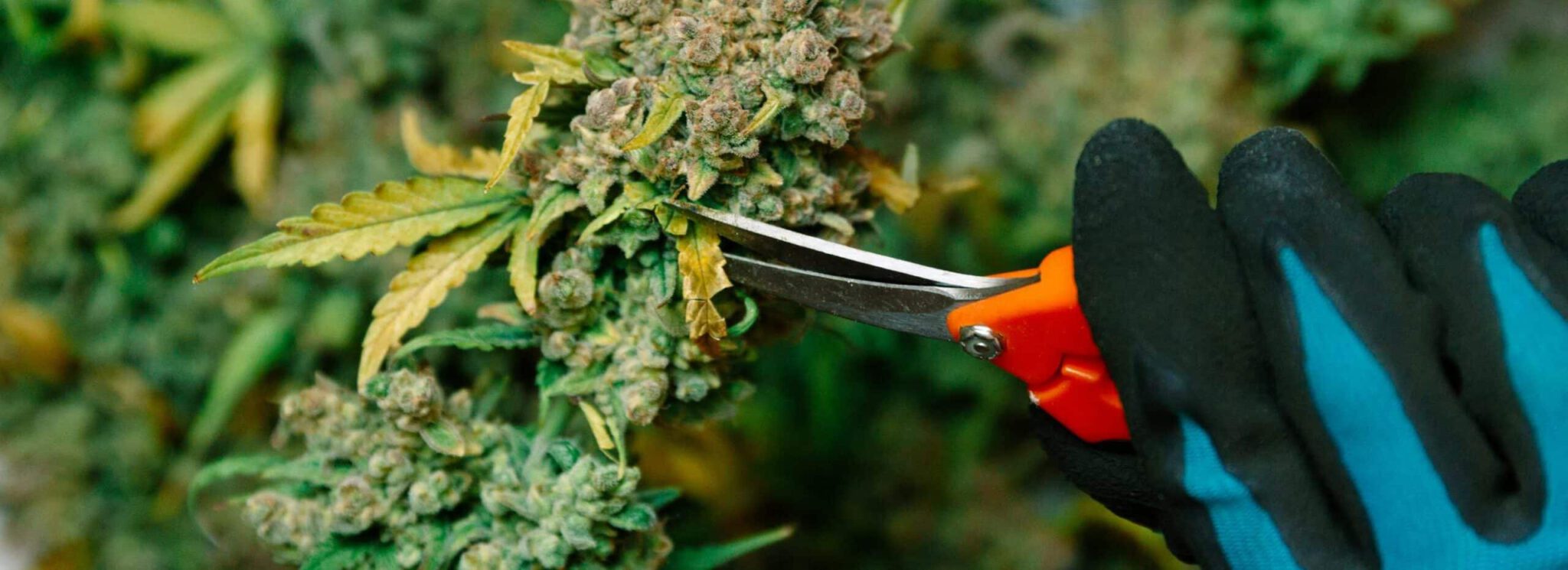Many cities around the U.S. held peaceful protests in response to George Floyd’s killing. In some places it led to civil unrest filled with rioting and vandalism. People broke into stores, destroyed much of what’s inside, and robbed them.
Many marijuana dispensaries were caught in the crossfire. According to Rolling Stone, the looting affected more than 40 dispensaries in California and Oregon.
Why Did Dispensary Looting Happen?
Everyone in the U.S. cannabis industry faces the challenge of financial institutions not allowing them to open a bank account. That is because the financial institution is beholden to federal regulations. The legalization of cannabis is determined on a state-by-state basis. Not the federal government. Therefore, cannabis remains illegal on a federal level.
Additionally, the Federal Deposit Insurance Company (FDIC) often will not insure a financial institution that provides loans to companies violating federal law. Not only that, financial institutions do not want to be held liable for aiding and abetting in activities that remain a felony under federal law.
Without access to a bank, cannabis businesses tend to be cash heavy. As such, it makes them more vulnerable to robberies.
The Effects of Dispensary Looting
Rolling Stone reports one dispensary lost $100,000 while another reveals their store was mostly destroyed. The protests and riots alone did not lead to the dispensary looting. Thieves used the protests as a distraction. They specifically targeted cannabis stores because they know they’re more likely to find cash.
According to one dispensary owner, it was not the protesters or looters who attacked her store. Rather, it was “armed criminals” who robbed the store and destroyed everything on the property. It was bad enough the store had seen a decline in business due to the pandemic. The owner does not know if insurance will cover any of the losses.
One store that was about to open when the looting happened lost everything. Unfortunately, the insurance policy does not cover damages from civil unrest.
Moreover, an online searchable database of dispensaries may have also helped thieves create a plan of attack. In response, businesses pressured the Bureau of Cannabis Control (BCC) and the California Department of Food and Agriculture (CDFA) to take the database offline. The database has since been disabled.
Despite everything, cannabis businesses support peaceful protests against police brutality. Several stores have reopened while others remain closed. One plans to do an assessment of the local police’s ability to respond to armed robbery before deciding whether to open.
It’s not just the newer stores affected. One business that has been around for more than a decade did not know if it could reopen due to debt. Add looting to the equation and it’s no wonder the store almost went bankrupt. Fortunately, a vertically integrated company has thrown a lifeline to help the store recover.
What Dispensaries Need to Do After Looting
The first step is to contact the police and file a report. A police report will help you with your insurance claim. Collect the names and badge numbers of all police officers on the property.
Skip cleaning up until the police gives approval. You want to avoid destroying evidence. If you need something that cannot wait until law enforcement arrives, wear gloves and touch as little as possible.
Document everything, take photos, and check video surveillance footage. Most state regulations require cannabis dispensaries have high-resolution video cameras with recording capabilities. If you work with a cannabis dispensary security
company, contact them to search for the footage of the looting.
Looting can cost more than repairing and replacing destroyed items. Some of the dispensaries have closed after the looting and have not reopened. Every day that a store is closed is lost sales.
That said, take photos and videos of everything that has been broken. Document everything that is missing. This is why it’s critical to keep an updated inventory. All the documentation will prove useful for record-keeping.
Once everything is done, review your policy to understand the deductibles and exceptions. Write down any questions you have as you review the policy. Be prepared to answer questions about the looting. The adjuster will want to know the date and time of the looting, what items were stolen and their locations in the store, the police report number, and any other details.
When you meet with the insurance adjuster, obtain the adjuster’s name and information. Do a review of the insurance policy to determine what is and is not covered. Address any gaps in coverage. Some cannabis dispensaries have learned their insurance does not cover damage from civil unrest. Don’t let this happen to you.
After the police finish the investigation and the insurance company has the information it needs, do clean up and repair. This is a good time to learn from the situation. For example, any time there is a possibility of rioting and vandalism, board up windows to prevent damage.
There were rumblings of potential rioting based on the outcome of the 2020 U.S. presidential election. Smart businesses boarded their windows and closed their doors until it was safe to reopen.
How a Cannabis Businesses Can Protect Itself
Every cannabis business — affected or not — needs to take steps to protect itself from future looting. Yes, the cannabis industry already faces the most stringent regulations. However, the price of ransacking and robbery costs more than not taking enough steps to protect themselves.
You most likely have visible security cameras installed around the property. It’s the most effective security deterrence with a fast ROI. That’s because most U.S. states and Canada require video surveillance in the cannabis industry as part of their security program.
However, the requirements vary from state to state and province to province in Canada. Even cities and counties may have their own requirements like the state of California does.
Laws for the marijuana industry are complex. That is why it’s crucial to work with companies with experience in cannabis industry security. Their experience will increase the chances of your being in compliance with the law. There are no shortcuts. Don’t take a chance with a company that has unproven experience in the industry.
Besides, the biggest threat to a cannabis business is not the armed thieves and looters. The Cannabis Business Times
says the biggest threat to a marijuana business is its employees.
Video Surveillance Considerations for Cannabis Dispensaries
The most important factor in selecting the right video surveillance system is to ensure it complies with the legal requirements for the location of your business. If you’re in the U.S., you want to look into your state’s requirements as well as any regulations for your city and county. Canadian-based businesses can find theirs in Canada’s cannabis laws and regulations.
As stated before, the camera surveillance system must meet the minimum resolution requirements per regulations. The regulations may also have guidance on camera placement. Regardless if regulations require it, do make sure the cameras are visible to everyone. Not only do you want cameras in the store but also in the back where the inventory is kept and in the parking lot.
While your government’s regulations may have specific rules regarding camera resolution, it’s important to verify the cameras are a high enough quality to make out identifying information such as faces and license plates.
Some regulations require system health checks as part of the video surveillance program. Even if it’s not mandatory, it’s a must-do. You don’t want to find out video surveillance didn’t work right when an event took place.
Additionally, some laws dictate video cameras must operate 24/7. System health checks will ensure you remain in compliance. An experienced video surveillance company can do regular system checks. It may be able to remotely fix problems without visiting your property.
A video security company with experience in the cannabis industry will have a backup plan in case of a power outage or inclement weather that knocks out a camera. They know how to minimize or help prevent downtime.
It’d also be worth exploring and investing in an integrated security system that connects multiple security technologies. For instance, many cannabis dispensaries incorporate an access control system. It controls who has access to different parts of the property. For example, your cashiers may not be allowed to enter the grow area. Access control can manage that.
Access control lets you customize each employee’s access to different areas on the property. When an employee quits, you can instantly remove the person’s access. You avoid the time and cost associated with rekeying locks. An integrated system enhances security by matching the time stamp from the access control system with the video for seamless identification.
Why Work with Stealth Monitoring?
Stealth has successfully implemented cannabis security for American and Canadian companies while ensuring they’re in compliance with their governments’ laws. In working with Stealth, you receive a customized security solution that helps protect your assets and complies with all applicable laws.
The security company’s video surveillance systems work in real-time to catch activities before or as they happen. The system combines video analytics and human intelligence for the best results. Stealth’s trained monitoring operators check your property when there is activity, not just motion.
You will see a quick ROI as Stealth’s technology costs up to 60 percent less than traditional security guards. The company’s customized security solutions maximize security while reducing liability.
Check out this cannabis case study to see what’s possible for your business. You may also want to download your free cannabis security guide. Please feel free to contact us
with your questions.

